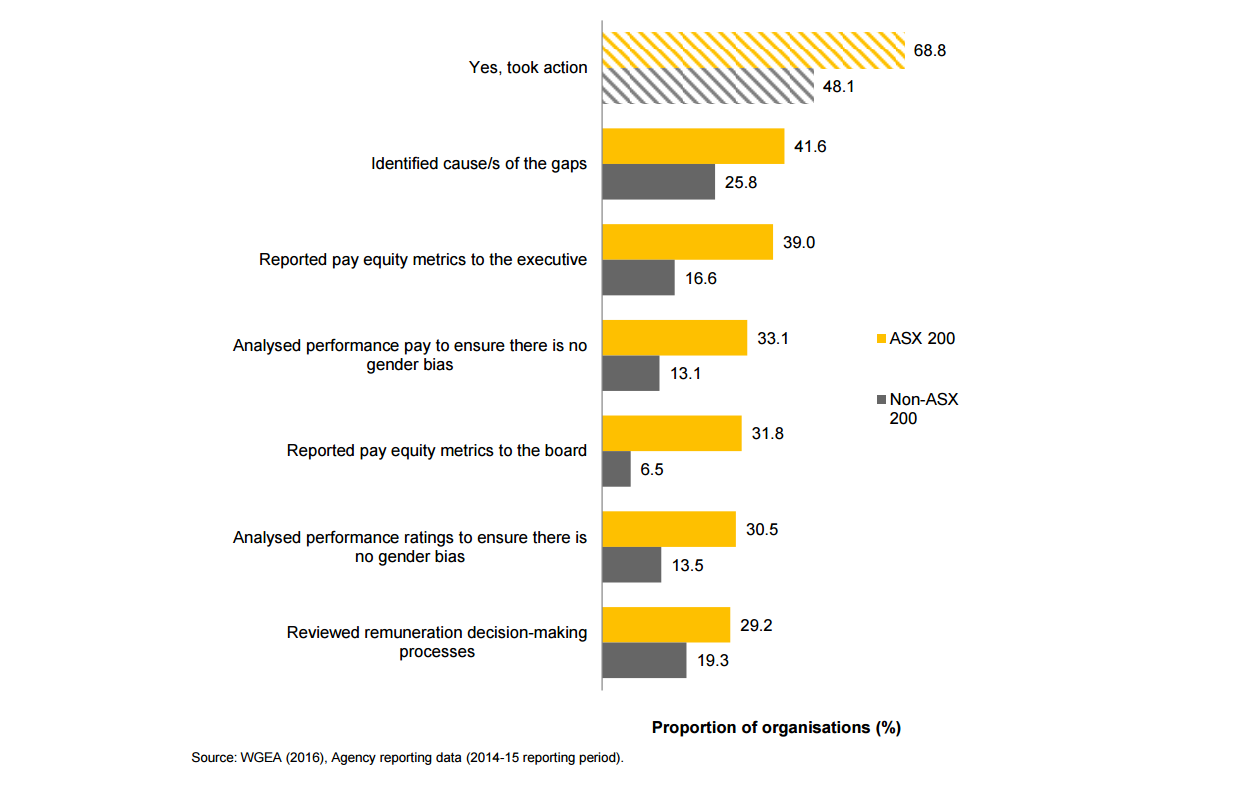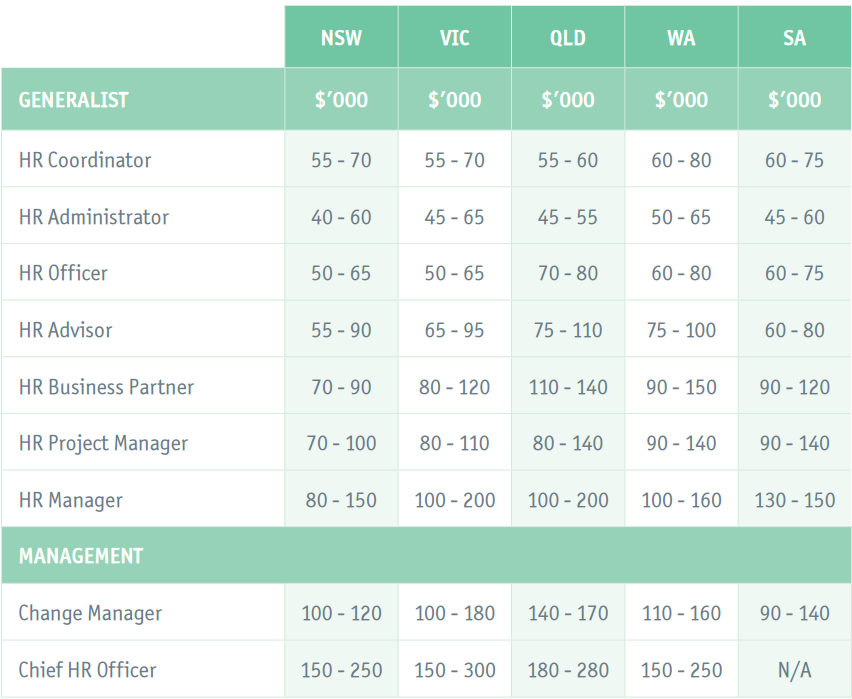Diversity of Thought Blog
How ASX 200 organisations address gender equality
Source: HR daily
ASX 200 companies, which since 2012 have been subject to diversity guidelines, are reporting significantly higher performance than other companies against diversity measures, new research shows.
The Workplace Gender Equality Agency report, based on data from 255 reports of ASX 200 companies and 4,415 reports of non-ASX 200 companies, shows 52.6 per cent of ASX 200 organisations analysed the pay gap in the last 12 months compared to just 17.2 per cent of those not in the ASX 200.
Some 68.8 per cent of ASX 200 employers have at some time analysed and taken action to address their gap, the report shows, with the most common step being identifying the cause of the gap (41.6%), reporting pay equity metrics to the executive (39%), and analysing performance pay to ensure no gender bias is present (33.1%).
While nearly a third (31.8%) of ASX 200 companies report pay equity metrics to their board, fewer than one in 10 (6.5%) non-ASX 200 organisations do.

Men in ASX 200 organisations earn on average 28.7 per cent more total remuneration than women, while those in non-ASX 200 companies earn on average 22.7 per cent more, the report says.
The ASX 200 has a higher proportion of employers offering a flexible work policy or strategy (74.3% compared to 59.4%). For both groups, the three most common forms of formal conditions and practices are carers’ leave, part-time work and unpaid leave, and the three most common informal conditions and practices are time-in-lieu, flexible work hours and telecommuting.
The WGEA says in the report that ASX 200 organisations should focus on increasing the amount of paid primary and secondary carers leave and support for employees experiencing domestic violence, and continue to address pay inequality and the limited representation of women in leadership positions.
Gender equality in ASX 200 organisations, WGEA, June 2016
“Turbulent economy” driving mixed demand for HR professionals
Australia’s two-speed economy is creating mixed demand for HR professionals, according to a new employment market update.
Chandler Macleod says in its HR update that the “turbulent economy”, low business confidence and rapidly changing technology has impacted the HR job market, but pressure for greater cost efficiencies is increasing demand for generalists and candidates with process automation expertise.
Diversity remains a “hot topic” nationally, so related experience and achievements are also considered valuable, and professionals with change management, workforce planning and IR experience are increasingly sought after, it says.
In NSW, demand for HR professionals is weak, though HR and change managers and organisational consultants are sought as employers re-configure their workforces to reduce costs.
The HR job market in Victoria is steady, the update shows, particularly for generalists and quality health and safety candidates; while in Queensland, steady job growth has increased demand for organisational development and change specialists, and for health and safety candidates in both white- and blue-collar sectors.
Western Australia’s “subdued” labour market is expected to increase demand for flexible, local and multi-skilled workforces, while South Australia’s high unemployment rate means talent is readily available across most sectors.
South Australia is also seeing among large organisations a trend of advertising HR roles internally, while sourcing talent for temporary roles externally. Candidates looking for permanent roles should therefore consider temporary roles, “as a way to gain access to internally advertised permanent opportunities”, the update says.
The update includes salary ranges for permanent HR generalist and management roles in five states:

Source: HR employment market update, Chandler Macleod
And hourly rate ranges for temporary roles:

Source: HR employment market update, Chandler Macleod
Human Resources Employment Market Update, Chandler Macleod, June – December 2016
1 July employment law changes
Employers should ensure they’re aware of several changes to employment law that came into effect on 1 July, says Coleman Greig principal Stephen Booth.
First, the new minimum wage is $672.70 per week (up from $656.90), and all award pay rates have increased by 2.4 per cent.
Employers should beware of paying less than the national minimum wage to any employee not covered by any age or disability-related percentage rate, he notes.
As previously reported, the salary cap for unfair dismissals has increased (up from $136,700 to $138,900), as has the compensation limit ($69,450, up from $68,350).
Further, employers with more than 20 employees should now be complying with the SuperStream system (simplified electronic superannuation compliance), while organisations with fewer than 20 employees now have until 28 October to comply; and the Fair Work Commission has updated the information statementthat must be given to all new employees.
Few employers record holistic HR metrics
One in four organisations across Asia Pacific have “few” HR and talent management metrics, which are mainly focused on employee outputs, new research shows.
Commissioned by Workday, the IDC research involved more than 1,400 employees and managers across Asia Pacific, finding that while most employers measure “basic workflow and functionalities”, just seven per cent of organisations have integrated HR platforms that align to business needs and provide a “holistic view” of employees.
This is a key finding, according to the researchers, as these employers tend to be “the most mature… when it comes to their workforce management capabilities”.
To adequately measure employee performance, organisations should track recruitment, compensation, talent management, payroll and learning, they say, and focus on analysing employee retention and payroll costs.

